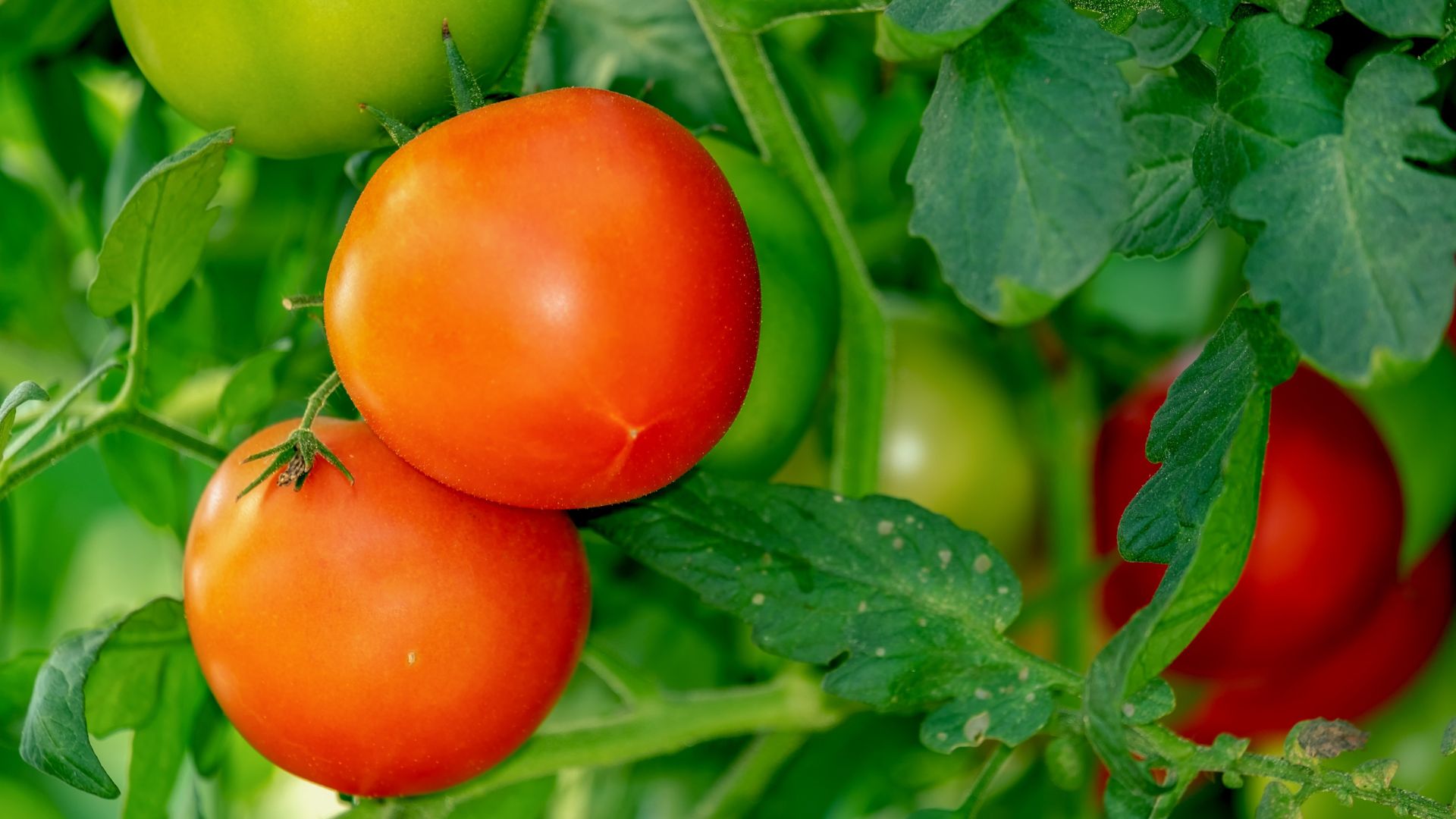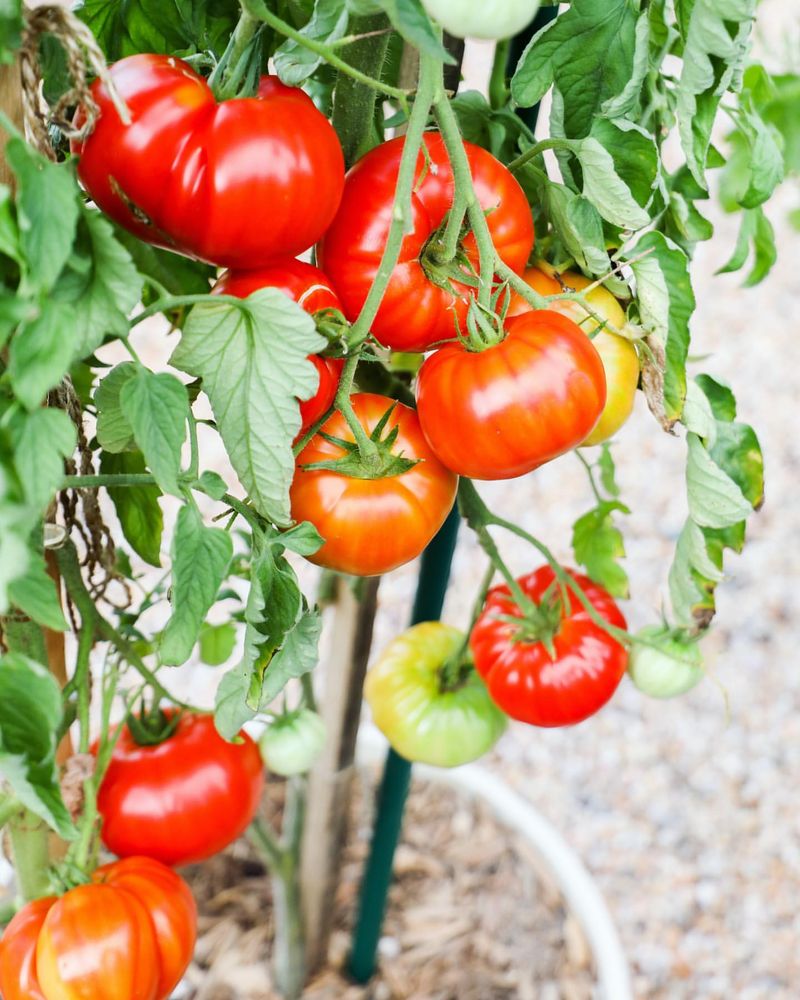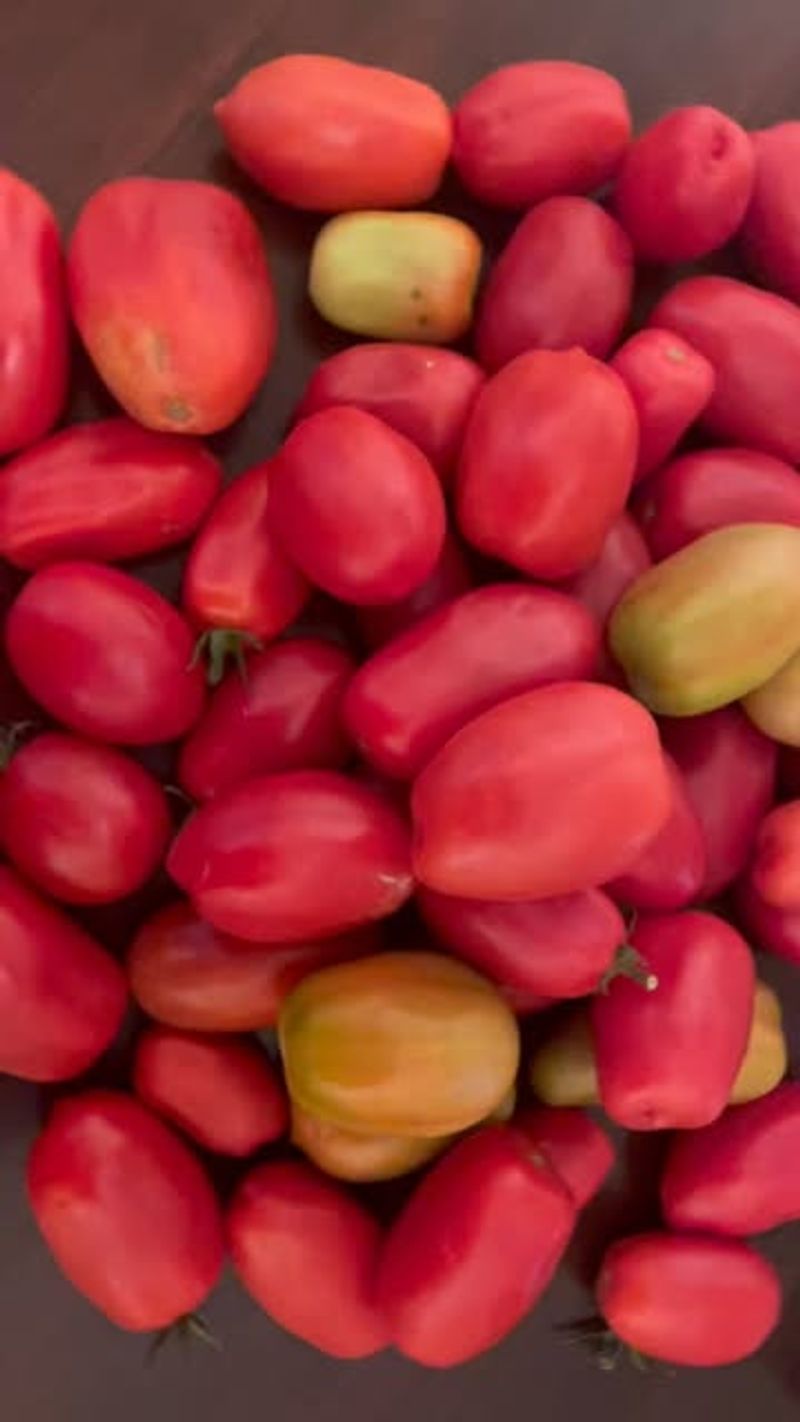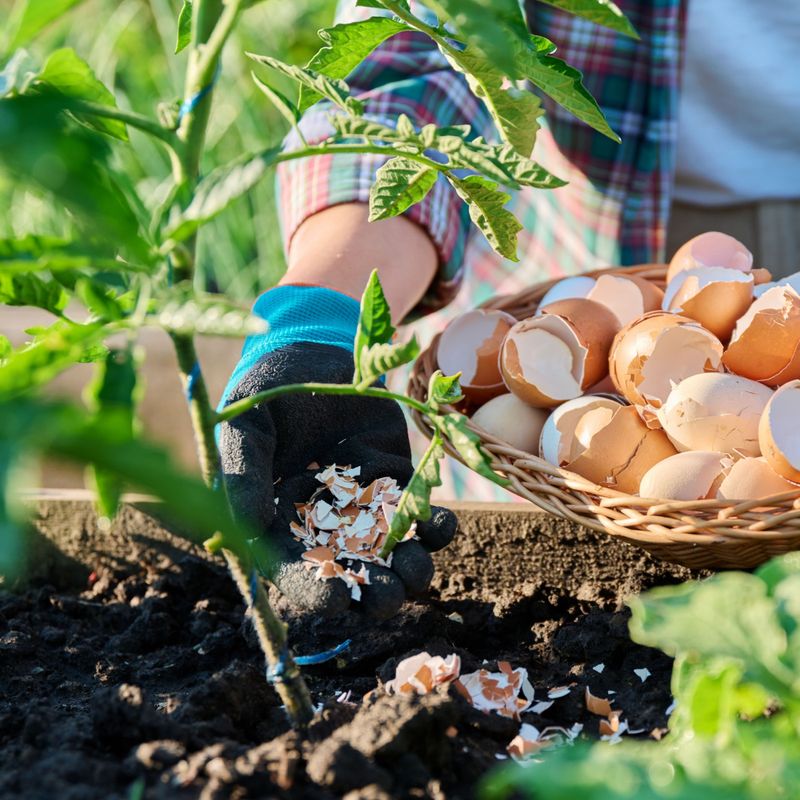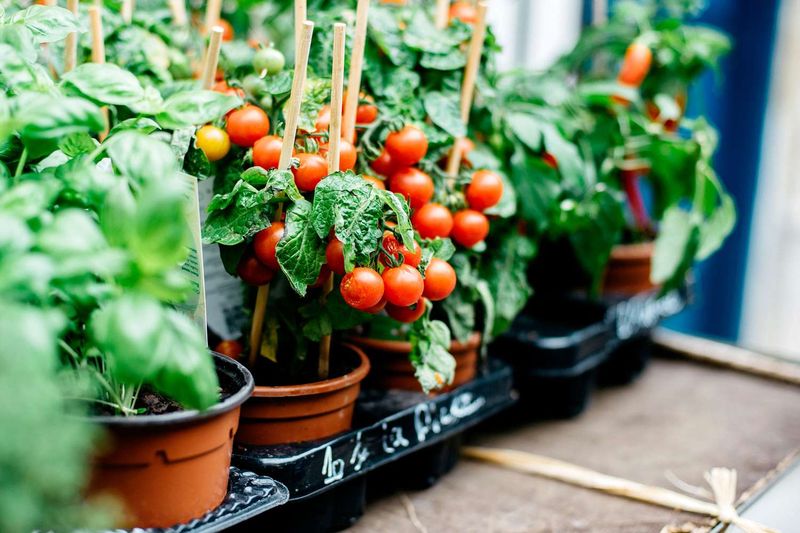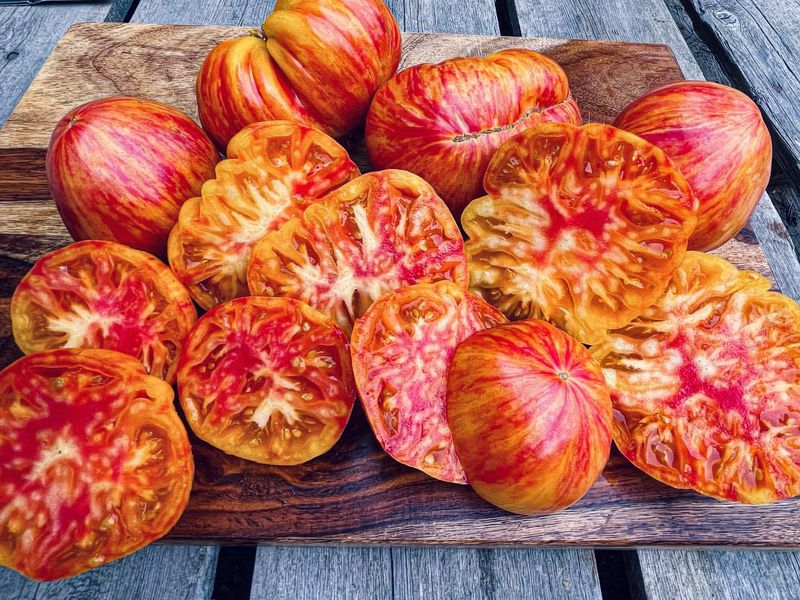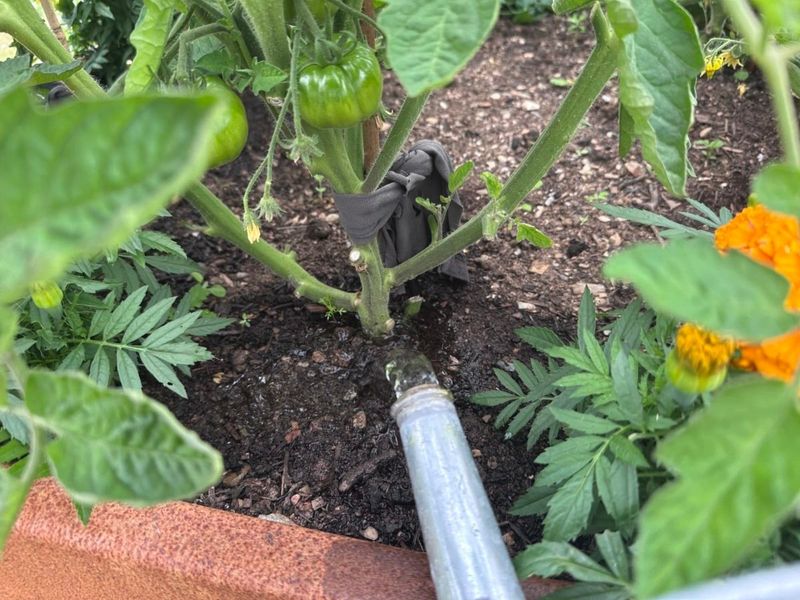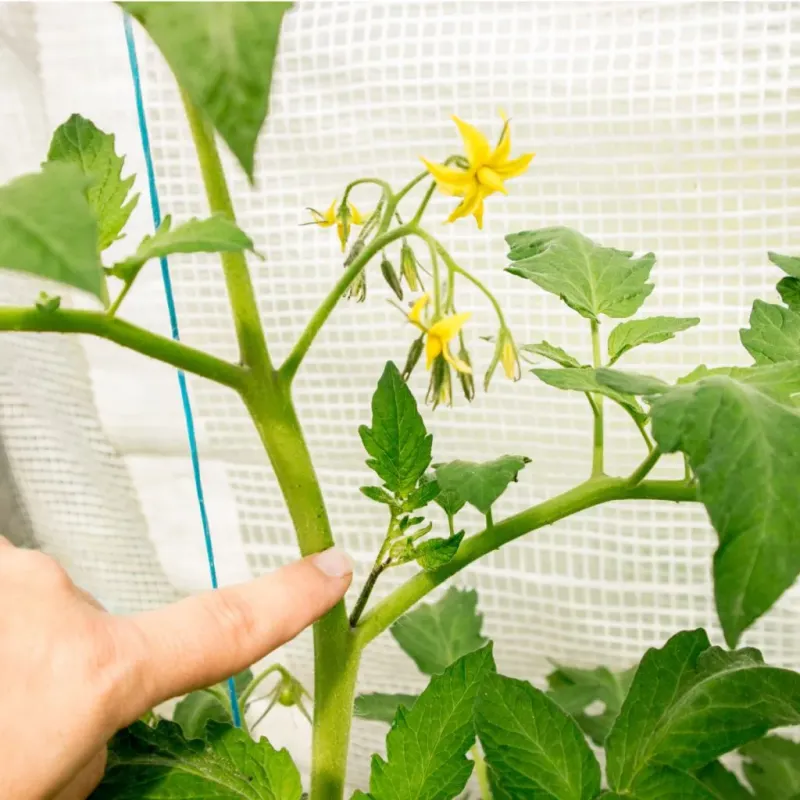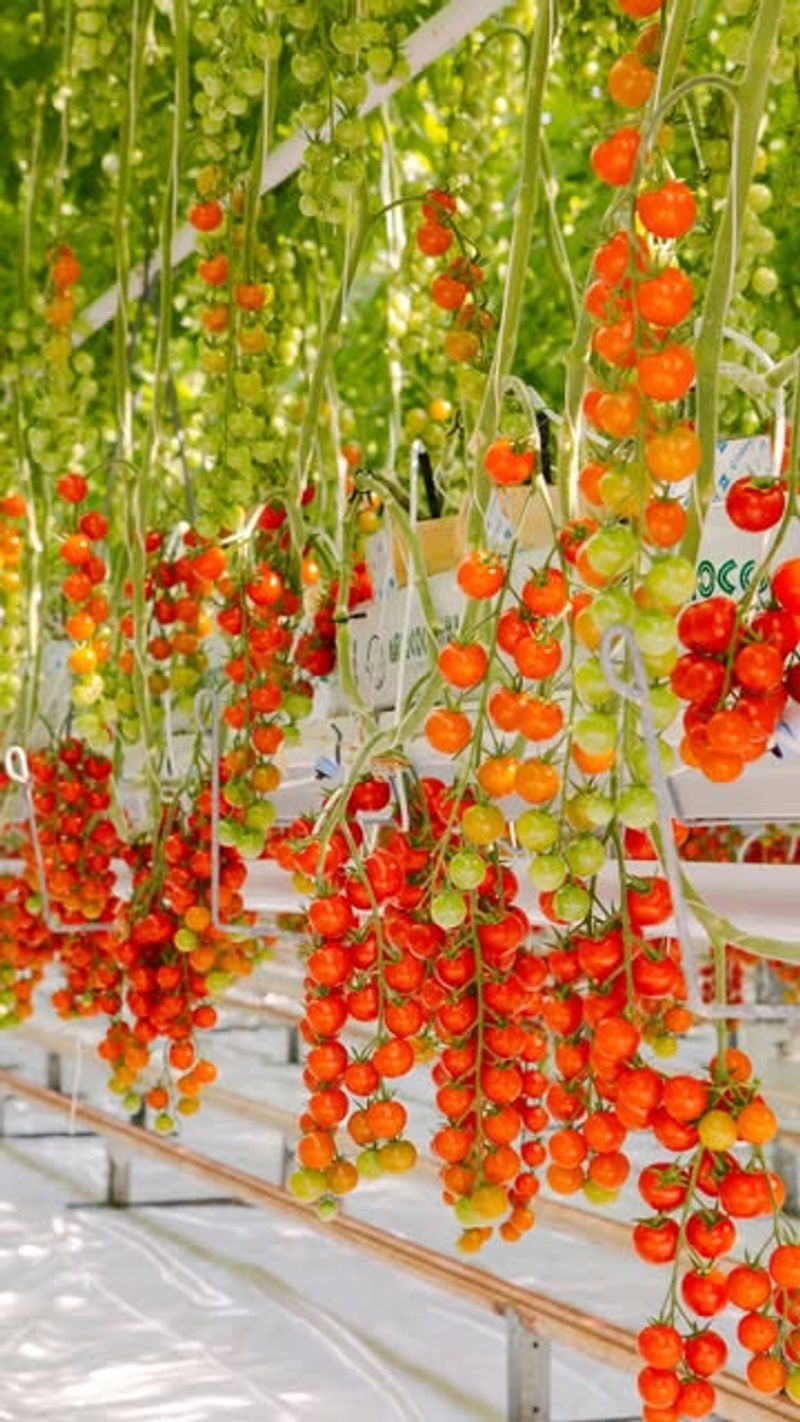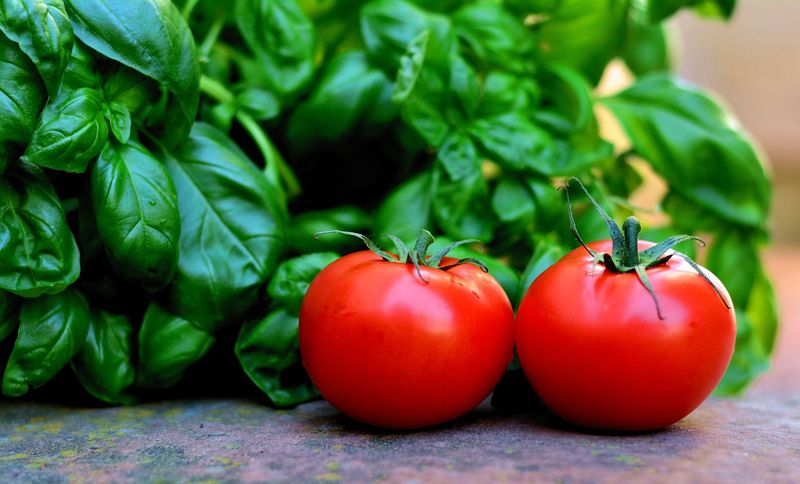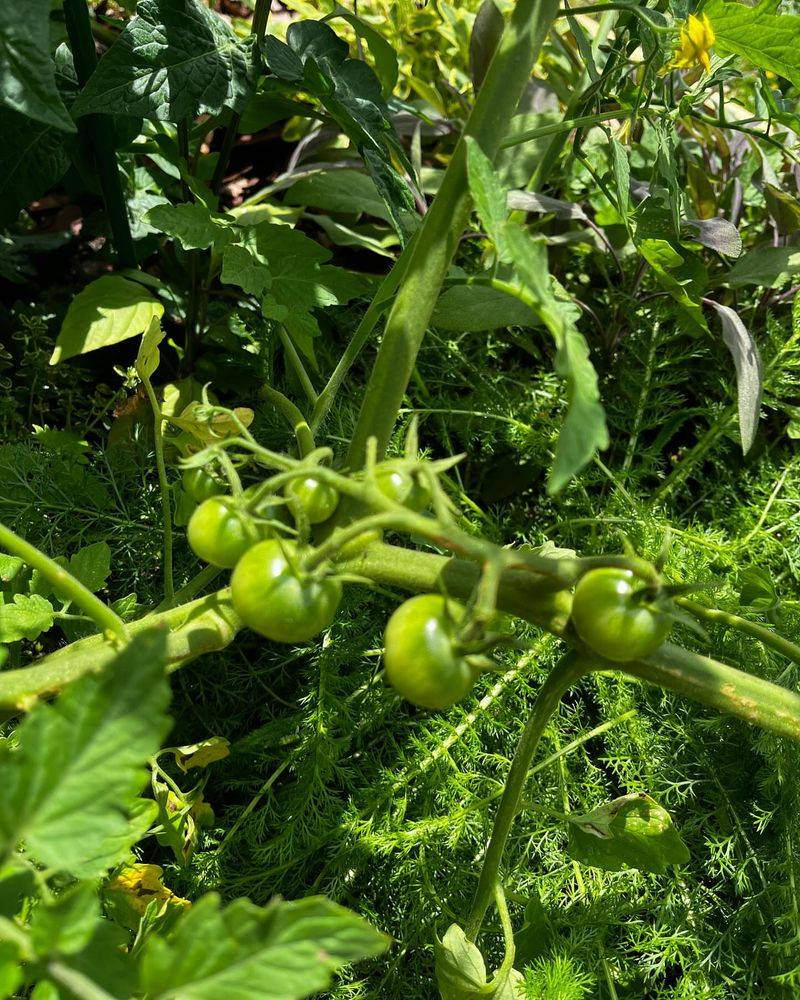Growing tomatoes is easy enough, but unlocking deep, sun-ripened flavor takes intention. Store-bought varieties often prioritize shelf life over taste, while homegrown ones—with the right care—can be rich, sweet, and incredibly rewarding. Flavor starts in the soil.
Use well-drained earth, balanced nutrients, and consistent watering. Skip heavy nitrogen, which boosts leaves instead of fruit, and focus on slow, steady nourishment to deepen taste.
Sunlight and patience seal the deal. Give your tomatoes 6–8 hours of direct sun, prune to improve airflow, and don’t rush the harvest. Let them ripen on the vine for that perfect balance of sweetness and acidity.
1. Plant In Full Sun Locations
The first time I grew tomatoes in partial shade, I was disappointed by their bland taste. Tomatoes develop their rich flavor through photosynthesis, which requires abundant sunlight.
Choose a spot that gets at least 8 hours of direct sun daily. The extra sunshine increases sugar production within the fruit, creating that perfect balance of sweetness and acidity we all crave.
During hot summers, afternoon shade is tempting, but resist the urge unless temperatures consistently exceed 95°F. That morning and midday sun is what transforms ordinary tomatoes into flavor powerhouses.
2. Reduce Watering As Fruits Ripen
Many gardeners don’t realize that overwatering dilutes tomato flavor. When fruits begin to ripen, gradually cut back on watering frequency while maintaining adequate moisture.
This slight stress forces the plant to concentrate its sugars and flavor compounds. I noticed a remarkable difference when I started this practice three seasons ago – my Brandywines went from good to extraordinary. Keep soil just barely moist during final ripening stages.
The fruits will be slightly smaller but packed with significantly more flavor. Just don’t let plants completely dry out, which causes different problems.
3. Add Crushed Eggshells To Soil
Ever wondered if those kitchen scraps could improve your garden? Crushed eggshells provide calcium that prevents blossom end rot while subtly enhancing flavor development in tomatoes.
Save shells throughout the year, rinse them, and bake at 250°F for 10 minutes to sterilize. Crush them into small pieces and mix a handful into each planting hole before transplanting seedlings.
The slow-release calcium improves cell wall structure in developing fruits, resulting in better texture and more complex flavor. I’ve found this especially effective with paste varieties like Roma and San Marzano.
4. Grow Determinate Varieties In Containers
Container-grown determinate tomatoes often develop more concentrated flavors than their in-ground counterparts. The restricted root space creates mild stress that intensifies taste while still allowing healthy growth.
Choose containers at least 5 gallons in size with excellent drainage. Varieties like ‘Bush Early Girl’ and ‘Roma’ thrive in this environment. The key is using high-quality potting mix specifically formulated for vegetables.
What worked for me was adding 20% compost to my container mix and positioning pots where they receive morning sun but some afternoon protection. This combination produces smaller yields but remarkably flavorful fruits.
5. Sprinkle Epsom Salts Monthly
A light application of Epsom salts (magnesium sulfate) can significantly improve tomato flavor by enhancing chlorophyll production and sweetness. I was skeptical until trying this on half my plants as an experiment.
Dissolve one tablespoon in a gallon of water and apply as a foliar spray or soil drench once monthly. The magnesium helps plants process sunlight more efficiently, which directly impacts sugar development in the fruits.
Be careful not to overdo it – more isn’t better with this trick. Just that small monthly dose makes a noticeable difference in taste complexity without risking mineral imbalances in your soil.
6. Choose Indeterminate Heirloom Varieties
Heirloom indeterminate varieties consistently outperform hybrids in flavor tests. These old-fashioned tomatoes haven’t been bred for shipping or uniform appearance, allowing their complex flavor genetics to shine through.
Brandywine, Cherokee Purple, and Black Krim are standouts I plant every year. Their sprawling growth habit requires more support, but the taste difference is worth the extra effort. The first time I bit into a sun-warmed Black Krim, I understood why people become tomato obsessives.
The depth of flavor – simultaneously sweet, tangy, and rich – simply can’t be matched by most modern hybrids bred primarily for disease resistance.
7. Apply Seaweed Extract Biweekly
Liquid seaweed extract provides micronutrients that dramatically enhance tomato flavor complexity. Unlike synthetic fertilizers that primarily boost size, seaweed extract improves the actual taste profile.
Apply a diluted solution every two weeks, following package directions carefully. The trace minerals and natural growth hormones support balanced plant development rather than just leafy growth. I’ve conducted side-by-side tests with and without seaweed treatments.
The difference isn’t subtle – treated plants consistently produce fruits with more nuanced flavors and that perfect acid-sugar balance that makes tomatoes so craveable.
8. Maintain Consistent Soil Moisture
Dramatic fluctuations in soil moisture stress tomato plants and significantly impact flavor development. Inconsistent watering often results in bland taste and poor texture, even in otherwise healthy plants.
Mulch heavily with straw or compost to maintain even soil moisture. Aim for consistent dampness – not soggy and never completely dry. Using a moisture meter helped me achieve this balance more effectively than finger-testing alone.
Set up a regular watering schedule based on your climate, adjusting for rainfall. In my garden, deep watering twice weekly works perfectly during normal summer conditions, but I monitor closely during heatwaves.
9. Prune Lower Leaves And Suckers
Strategic pruning redirects the plant’s energy toward fruit production rather than excessive foliage. Remove the bottom 12 inches of leaves once plants are established to improve air circulation and focus energy upward.
Pinch off suckers (the shoots that form in leaf axils) below the first flower cluster. This concentrates the plant’s resources into developing fewer but more flavorful fruits rather than spreading energy throughout extensive foliage.
What surprised me was how much sweeter my cherry tomatoes became after implementing this technique. The remaining fruits received more nutrients and developed more complex flavors without sacrificing overall yield significantly.
10. Add Compost Tea Monthly
Brewing compost tea creates a microbe-rich solution that enhances soil biology and improves nutrient availability. These beneficial microorganisms help tomato plants access nutrients that directly contribute to flavor development.
Fill a bucket one-third with finished compost, add water, and let steep for 24-48 hours, stirring occasionally. Strain and dilute the resulting liquid until it’s the color of weak tea before applying to soil around plants.
I’ve found monthly applications during the growing season make a noticeable difference in taste. The complex ecosystem created in the soil seems to translate directly to more complex flavors in the harvested fruits.
11. Harvest At Peak Ripeness
The single biggest factor affecting tomato taste is harvesting at the perfect moment. Unlike store tomatoes picked green, homegrown ones should fully ripen on the vine for maximum flavor development.
Wait until fruits are completely colored but still firm with a slight give when gently squeezed. That perfect moment varies by variety – some are best with a bit of green shoulder remaining, others when fully colored.
Early morning harvesting preserves the highest sugar content. I’ve found tomatoes picked at 7am consistently taste sweeter than those harvested in afternoon heat when plants are slightly stressed from the day’s sun.
12. Plant Basil As Companions
Growing basil and tomatoes together isn’t just convenient for cooking – it actually improves tomato flavor. Basil repels certain pests while its aromatic oils seem to enhance neighboring tomatoes’ taste complexity.
Plant one or two basil plants near each tomato, close enough for the aromas to intermingle but not so close that they compete for nutrients. I’ve experimented with different herbs, but nothing matches basil’s flavor-enhancing effect.
The relationship appears mutually beneficial. My side-by-side taste tests consistently show tomatoes grown alongside basil develop more nuanced flavors than isolated plants, particularly noticeable in paste varieties used for sauce.
13. Add Banana Peels To Planting Holes
This old gardener’s trick really works! Adding a dried banana peel to each planting hole provides slow-release potassium that significantly enhances tomato sweetness and complexity. Dry peels for several days until leathery, then cut into small pieces.
Place these in the bottom of each planting hole before adding your seedling. The decomposing peel releases potassium gradually throughout the growing season.
I’ve conducted split tests in my garden with and without this method. The difference is particularly noticeable in cherry varieties, where the natural sweetness becomes even more pronounced with this simple, free soil amendment.
14. Use Organic Fertilizers Only
Synthetic fertilizers produce rapid growth but often at the expense of flavor. Switching to organic options like fish emulsion, worm castings, or composted manure results in noticeably tastier tomatoes.
Organic fertilizers release nutrients slowly, allowing plants to absorb them as needed rather than forcing rapid growth. This measured approach leads to more balanced development of flavor compounds within the fruits.
Many gardeners don’t realize that over-fertilizing with nitrogen produces lush foliage but bland tomatoes. I apply a balanced organic fertilizer at planting time, then switch to lower-nitrogen options once flowering begins.
15. Increase Potassium Before Fruiting
Boosting potassium levels just as flowers appear dramatically improves the sweetness-to-acid ratio in developing tomatoes. This mineral directly influences sugar development and overall flavor complexity.
Apply a potassium-rich amendment like wood ash (1 cup per plant), greensand, or a commercial organic product formulated for fruiting plants. Avoid standard tomato fertilizers which often contain too much nitrogen relative to potassium.
The timing is crucial – applying just before or during early flowering yields the best results. I learned this from an elderly neighbor whose tomatoes always outshined mine, and implementing his advice transformed my harvests from good to exceptional.

